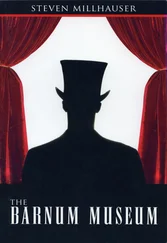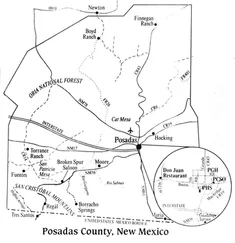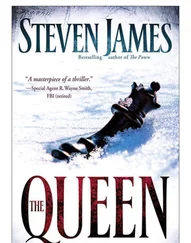Steven Levitt - Freakonomics
Здесь есть возможность читать онлайн «Steven Levitt - Freakonomics» весь текст электронной книги совершенно бесплатно (целиком полную версию без сокращений). В некоторых случаях можно слушать аудио, скачать через торрент в формате fb2 и присутствует краткое содержание. Год выпуска: 2005, ISBN: 2005, Издательство: HarperCollins Publishers Ltd., Жанр: Прочая научная литература, на английском языке. Описание произведения, (предисловие) а так же отзывы посетителей доступны на портале библиотеки ЛибКат.
- Название:Freakonomics
- Автор:
- Издательство:HarperCollins Publishers Ltd.
- Жанр:
- Год:2005
- ISBN:ISBN 0-06-083822-1
- Рейтинг книги:5 / 5. Голосов: 1
-
Избранное:Добавить в избранное
- Отзывы:
-
Ваша оценка:
- 100
- 1
- 2
- 3
- 4
- 5
Freakonomics: краткое содержание, описание и аннотация
Предлагаем к чтению аннотацию, описание, краткое содержание или предисловие (зависит от того, что написал сам автор книги «Freakonomics»). Если вы не нашли необходимую информацию о книге — напишите в комментариях, мы постараемся отыскать её.
Freakonomics — читать онлайн бесплатно полную книгу (весь текст) целиком
Ниже представлен текст книги, разбитый по страницам. Система сохранения места последней прочитанной страницы, позволяет с удобством читать онлайн бесплатно книгу «Freakonomics», без необходимости каждый раз заново искать на чём Вы остановились. Поставьте закладку, и сможете в любой момент перейти на страницу, на которой закончили чтение.
Интервал:
Закладка:
Because Kennedy couldn’t fight in World War II—he had had a bad back since childhood—he felt compelled to defend his country at home. Its worst enemy, he believed, was bigotry. Kennedy became a self-described “dissident at large,” writing anti-bigotry articles and books. He became close friends with Woody Guthrie, Richard Wright, and a host of other progressives; Jean-Paul Sartre published his work in France.
Writing did not come easily to Kennedy, or happily. He was at root a country boy who would rather have been off fishing the swamps. But he was afflicted by a foolhardy devotion to his cause. Kennedy would go on to become the only gentile member of the Anti-Defamation League’s postwar effort to smite bigotry. (He coined the phrase “Frown Power,” a centerpiece of the ADL’s peer-pressure campaign, which encouraged people to pointedly frown when they heard bigoted speech.) He became the only white correspondent for the Pittsburgh Courier, the country’s largest black newspaper. (He wrote a column about the race struggle in the South under the pseudonym Daddy Mention—a black folk hero who, as myth told it, could outrun the blast of a sheriff’s shotgun.)
What drove Kennedy was a hatred of small-mindedness, ignorance, obstructionism, and intimidation—which, in his view, were displayed by no organization more proudly than by the Ku Klux Klan. Kennedy saw the Klan as the terrorist arm of the white establishment itself. This struck him as an intractable problem, for a variety of reasons. The Klan was in cahoots with political, business, and law-enforcement leaders. The public was frightened and felt power-less to act against the Klan. And the few anti-hate groups that existed at the time had little leverage or even information about the Klan. As Kennedy later wrote, he was particularly chagrined by one key fact about the Klan: “Almost all of the things written on the subject were editorials, not exposés. The writers were against the Klan, all right, but they had precious few inside facts about it.”
So Kennedy decided—as any foolhardy, fearless, slightly daft anti-bigot would—to go undercover and join the Ku Klux Klan.
In Atlanta, he started hanging around a pool hall “whose habitués,” as he later wrote, “had the frustrated, cruel look of the Klan about them.” A man named Slim, a taxi driver, sat beside him at the bar one afternoon. “What this country needs is a good Kluxing,” Slim said. “That’s the only way to keep the niggers, kikes, Catholic dagos, and Reds in their place!”
Kennedy introduced himself as John S. Perkins, the alias he had adopted for his mission. He told Slim, truthfully, that his uncle Brady Perkins back in Florida had once been a Great Titan with the Klan. “But they’re dead now, aren’t they?” he asked Slim.
That prompted Slim to whip out a Klan calling card: “Here Yesterday, Today, Forever! The Ku Klux Klan Is Riding! God Give Us Men!” Slim told “Perkins” that he was in luck, for there was a membership drive under way. The $10 initiation fee—the Klan’s sales pitch was “Do You Hate Niggers? Do You Hate Jews? Do You Have Ten Dollars?”—had been reduced to $8. Then there was another $10 in annual dues, and $15 for a hooded robe.
Kennedy balked at the various fees, pretending to play hard to get, but agreed to join. Not long after, he took the Klan oath in a nighttime mass initiation atop Stone Mountain. Kennedy began attending weekly Klan meetings, hurrying home afterward to write notes in a cryptic shorthand he invented. He learned the identities of the Klan’s local and regional leaders and deciphered the Klan’s hierarchy, rituals, and language. It was Klan custom to affix a Kl to many words; thus would two Klansmen hold a Klonversation in the local Klavern. Many of the customs struck Kennedy as almost laughably childish. The secret Klan handshake, for instance, was a left-handed, limp-wristed fish wiggle. When a traveling Klansman wanted to locate brethren in a strange town, he would ask for a “Mr. Ayak”—“Ayak” being code for “Are You a Klansman?” He would hope to hear, “Yes, and I also know a Mr. Akai”—code for “A Klansman Am I.”
Before long, Kennedy was invited to join the Klavaliers, the Klan’s secret police and “flog squad.” For this privilege, his wrist was slit with a jackknife so that he could take a blood oath:
“Klansman, do you solemnly swear by God and the Devil never to betray secrets entrusted to you as a Klavalier of the Klan?”
“I swear,” Kennedy responded.
“Do you swear to provide yourself with a good gun and plenty of ammunition, so as to be ready when the nigger starts trouble to give him plenty?”
“I do.”
“Do you further swear to do all in your power to increase the white birth rate?”
“I do.”
Kennedy was promptly instructed to pay $10 for his initiation into the Klavaliers, as well as $1 a month to cover Klavalier expenses. He also had to buy a second hooded robe, to be dyed black.
As a Klavalier, Kennedy worried that he would someday be expected to inflict violence. But he soon discovered a central fact of life in the Klan—and of terrorism in general: most of the threatened violence never goes beyond the threat stage.
Consider lynching, the Klan’s hallmark sign of violence. Here, compiled by the Tuskegee Institute, are the decade-by-decade statistics on the lynching of blacks in the United States:
YEARS | LYNCHINGS OF BLACKS
1890–1899 | 1,111
1900–1909 | 791
1910–1919 | 569
1920–1929 | 281
1930–1939 | 119
1940–1949 | 31
1950–1959 | 6
1960–1969 | 3
Bear in mind that these figures represent not only lynchings attributed to the Ku Klux Klan but the total number of reported lynchings. The statistics reveal at least three noteworthy facts. The first is the obvious decrease in lynchings over time. The second is the absence of a correlation between lynchings and Klan membership: there were actually more lynchings of blacks between 1900 and 1909, when the Klan was dormant, than during the 1920s, when the Klan had millions of members—which suggests that the Ku Klux Klan carried out far fewer lynchings than is generally thought.
Third, relative to the size of the black population, lynchings were exceedingly rare. To be sure, one lynching is one too many. But by the turn of the century, lynchings were hardly the everyday occurrence that they are often remembered as. Compare the 281 victims of lynchings in the 1920s to the number of black infants who died as a result of malnutrition, pneumonia, diarrhea, and the like. As of 1920, about 13 out of every 100 black children died in infancy, or roughly 20,000 children each year—compared to 28 people who were lynched in a year. As late as 1940, about 10,000 black infants died each year.
What larger truths do these lynching figures suggest? What does it mean that lynchings were relatively rare and that they fell precipitously over time, even in the face of a boom in Klan membership?
The most compelling explanation is that all those early lynchings worked. White racists—whether or not they belonged to the Ku Klux Klan—had through their actions and their rhetoric developed a strong incentive scheme that was terribly clear and terribly frightening. If a black person violated the accepted code of behavior, whether by talking back to a trolley driver or daring to try to vote, he knew he might well be punished, perhaps by death.
So by the mid-1940s, when Stetson Kennedy joined up, the Klan didn’t really need to use as much violence. Many blacks, having long been told to behave like second-class citizens—or else—simply obliged. One or two lynchings went a long way toward inducing docility among even a large group of people, for people respond strongly to strong incentives. And there are few incentives more powerful than the fear of random violence—which, in essence, is why terrorism is so effective.
Читать дальшеИнтервал:
Закладка:
Похожие книги на «Freakonomics»
Представляем Вашему вниманию похожие книги на «Freakonomics» списком для выбора. Мы отобрали схожую по названию и смыслу литературу в надежде предоставить читателям больше вариантов отыскать новые, интересные, ещё непрочитанные произведения.
Обсуждение, отзывы о книге «Freakonomics» и просто собственные мнения читателей. Оставьте ваши комментарии, напишите, что Вы думаете о произведении, его смысле или главных героях. Укажите что конкретно понравилось, а что нет, и почему Вы так считаете.











